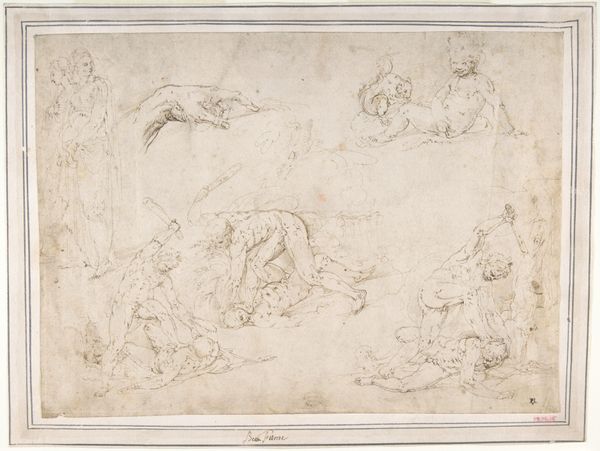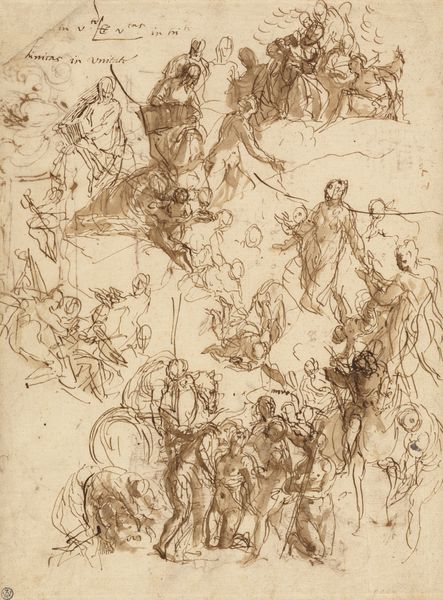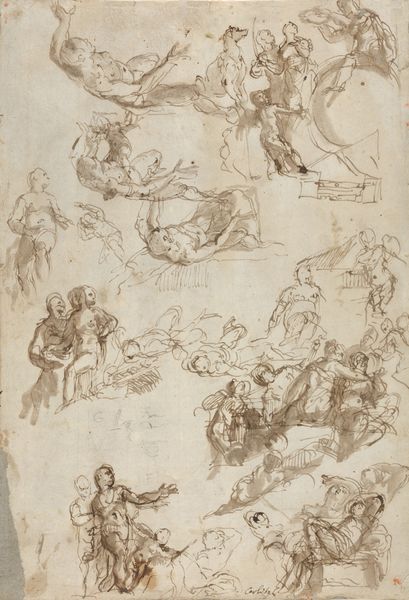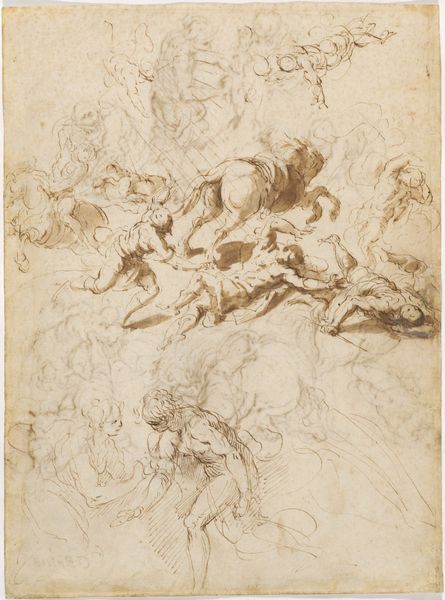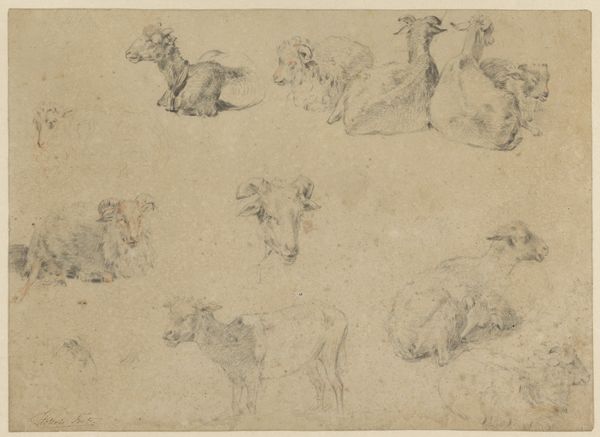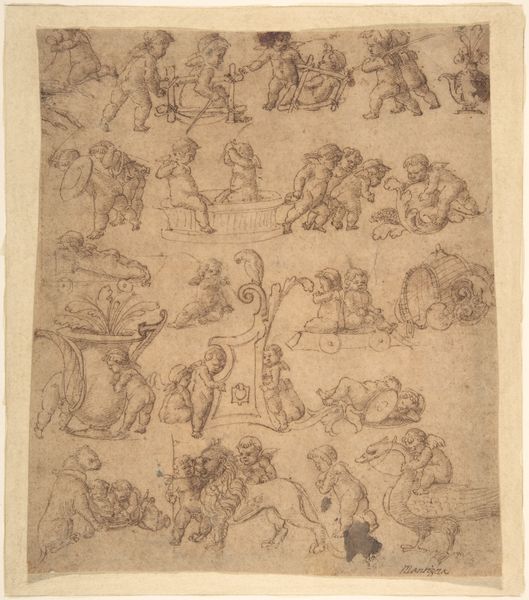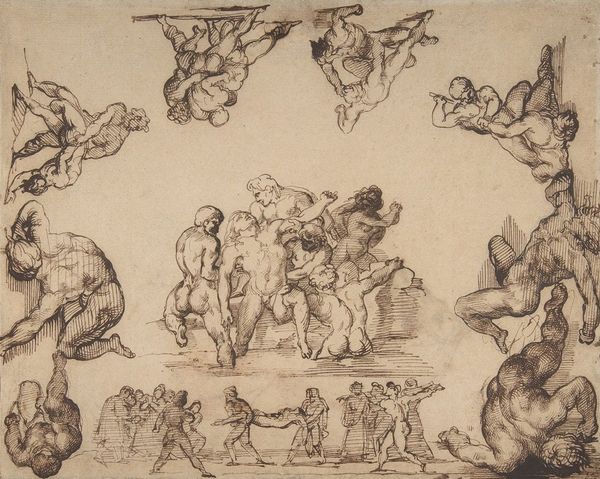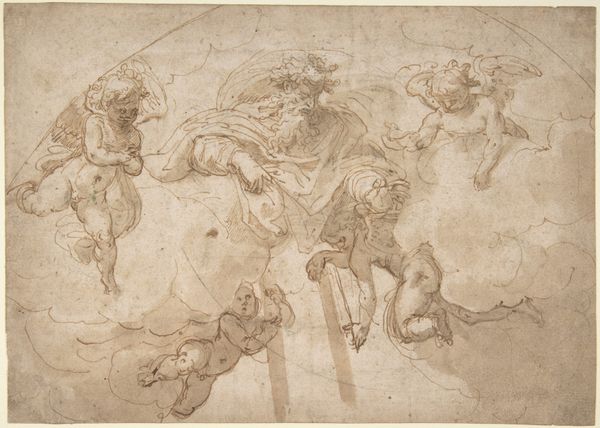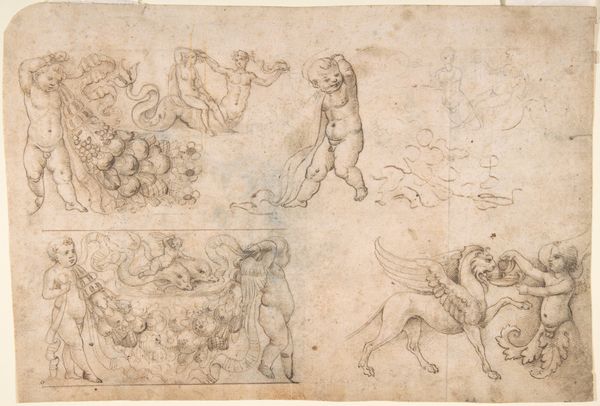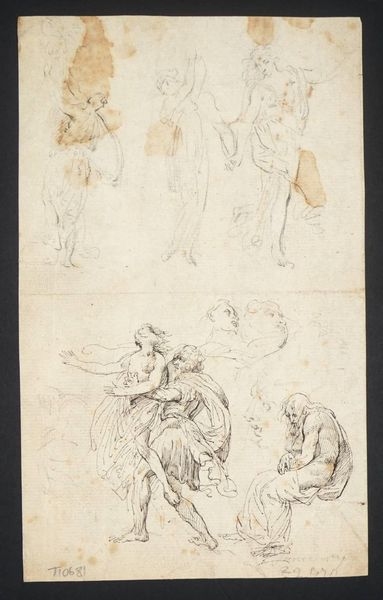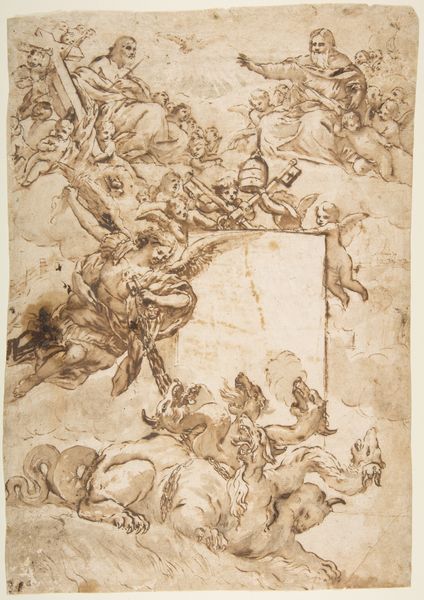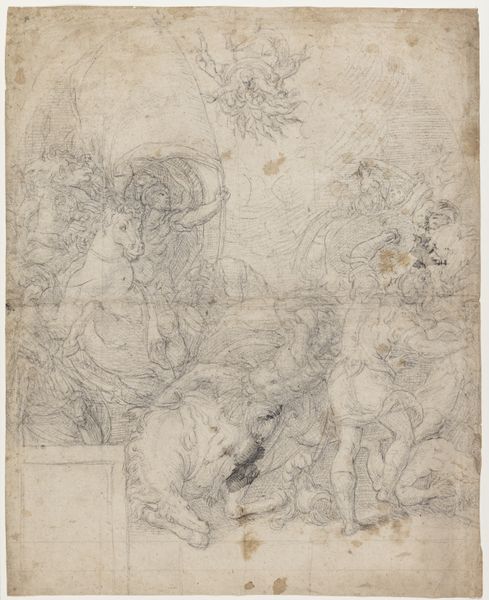
A Compartmented Ceiling with Allegories and Myths c. late 1580s
0:00
0:00
drawing, paper, ink
#
drawing
#
allegory
#
figuration
#
paper
#
ink
#
italian-renaissance
Dimensions: overall: 35.5 × 27.3 cm (14 × 10 3/4 in.)
Copyright: National Gallery of Art: CC0 1.0
Editor: This is Alessandro Maganza's "A Compartmented Ceiling with Allegories and Myths," created in the late 1580s using ink on paper. My initial reaction is how dynamic the composition feels despite being monochromatic. There's movement implied in every figure! How do you interpret the composition? Curator: Formally, I see this as an exploration of the interplay between line and void. Observe the deliberate use of hatching to suggest volume, juxtaposed with the flat, unmodulated areas of the paper. This contrast animates the figures and provides them depth on the page, don't you think? Editor: Yes, definitely! I also notice how the compartmentalization—the individual groupings—creates a sense of order, while the figures themselves seem to defy that order with their implied movement. What’s the effect of this dichotomy? Curator: Precisely! It's this tension between order and dynamism that makes the drawing so compelling. Each allegorical figure exists within its own defined space, but their gestures and poses break out of these confines. This speaks to the inherent drama in representing allegorical and mythological subjects, doesn't it? Each scene seems to be a study of potential ceiling fresco compositions. Notice Maganza's interest in foreshortening? How do you feel about this? Editor: Oh, you're right! I see it now in the figures near the top—they're designed to be viewed from below. That makes the composition feel less like a collection of studies and more like a unified whole. Thank you! Curator: The pleasure is all mine. Thinking about the Renaissance masters like Michelangelo and Raphael is a key to considering such details. We must not underestimate the technical and art-historical mastery involved in works like these. What a lovely chance to ponder the power of art.
Comments
No comments
Be the first to comment and join the conversation on the ultimate creative platform.
